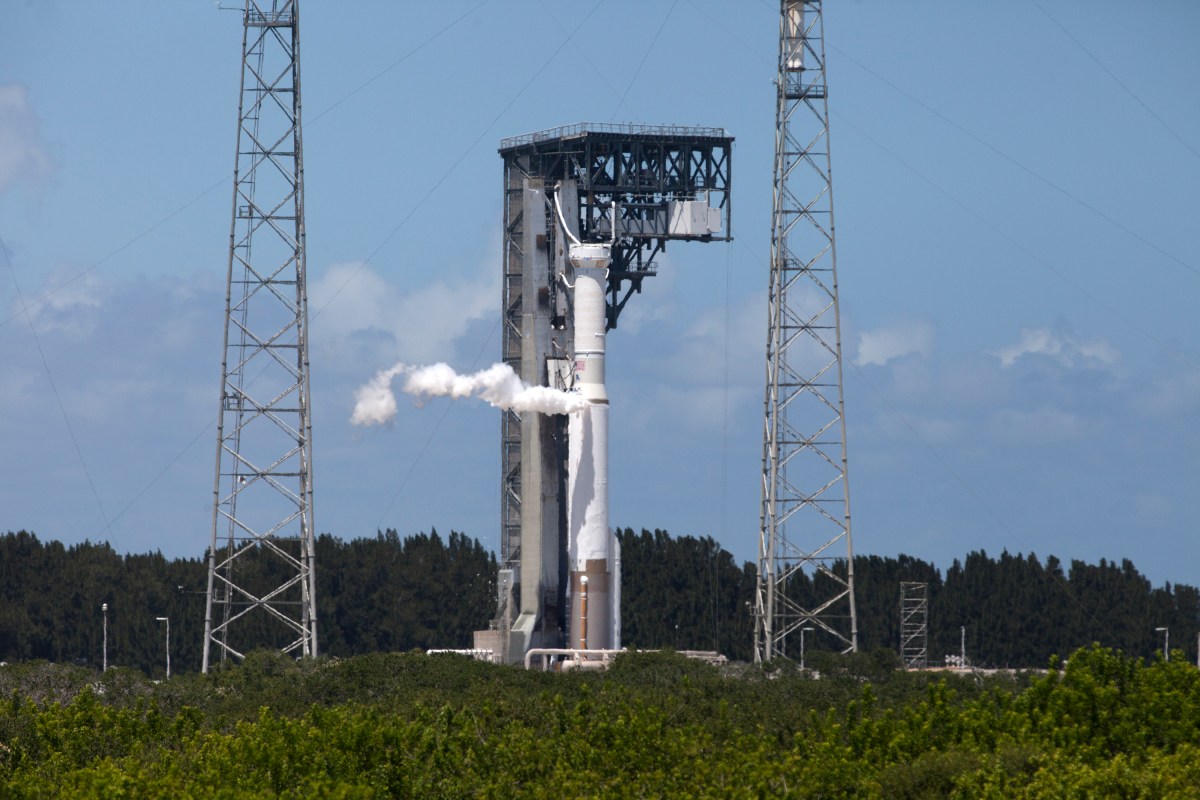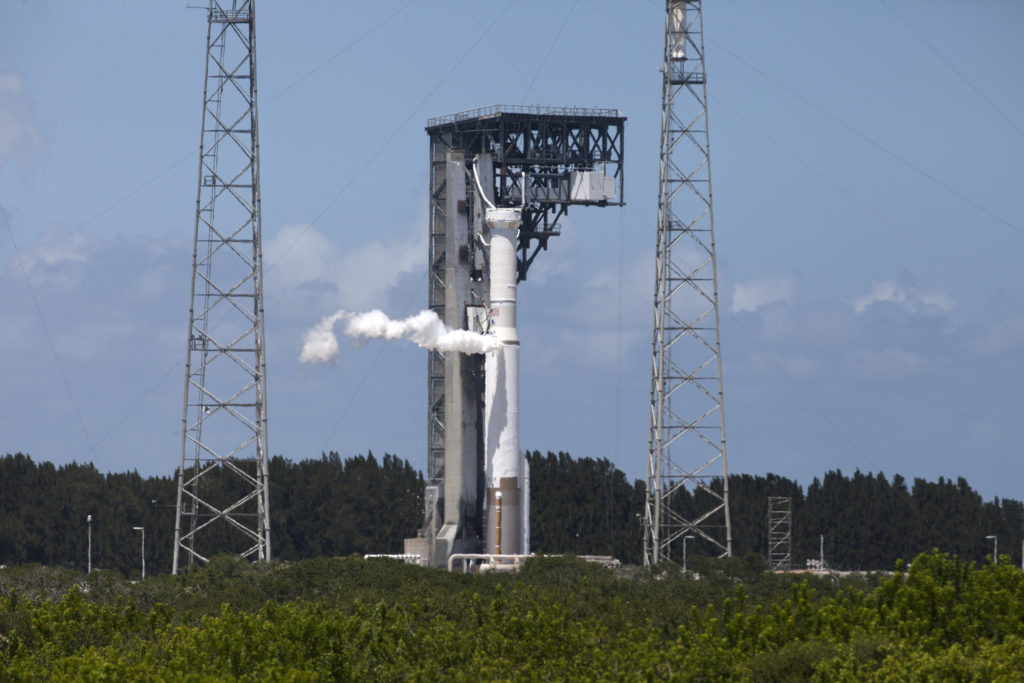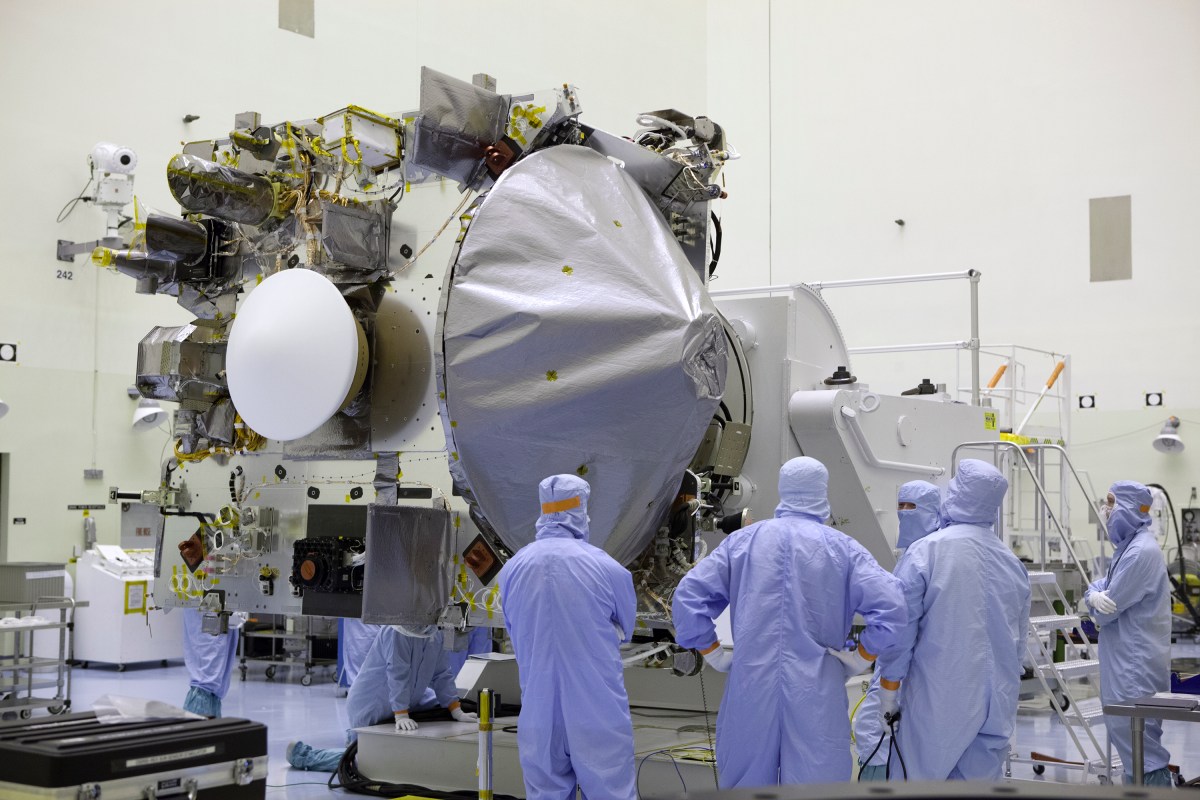The OSIRIS-REx spacecraft was lifted into the Vertical Integration Facility at Space Launch Complex 41 and bolted into place on a United Launch Alliance Atlas V on Monday. The spacecraft, enclosed in a protective fairing, is to liftoff aboard the rocket on Sept. 8 to begin its mission to survey an asteroid called Bennu and then take a small sample from its surface and send that sample to Earth for analysis. Photo credit: NASA/Dimitri Gerondidakis
Author: Steven Siceloff
Atlas V Team Conducts Wet Dress Rehearsal
The booster and Centaur upper stage of a United Launch Alliance Atlas V vent gaseous propellant during a “wet dress rehearsal” test at Space Launch Complex 41 on Florida’s Cape Canaveral Air Force Station. The rocket will boost NASA’s OSIRIS-REx spacecraft on its way to the asteroid Bennu. Short for Origins, Spectral Interpretation, Resource Identification, Security-Regolith Explorer, OSIRIS-REx is to survey the asteroid closely before taking a sample from its surface and sending that small sample back to Earth for study.
Targeted for liftoff Sept. 8, 2016, OSIRIS-REx will be the first U.S. mission to sample an asteroid, retrieve at least two ounces of surface material and return it to Earth for study. The asteroid may hold clues to the origin of the solar system and the source of water and organic molecules found on Earth. Photo credit: NASA/Kim Shiflett
Asteroid Sampler Comm System Checks Complete
 A spacecraft designed to sample an asteroid and return that sample to Earth will depend greatly on its communications systems with Earth to relay everything from its health and status to scientific findings from making a detailed survey of the asteroid known as Bennu. That’s why engineers from NASA’s Deep Space Network spent the past couple of weeks performing detailed tests of the various communications systems on the OSIRIS-REx spaceraft.
A spacecraft designed to sample an asteroid and return that sample to Earth will depend greatly on its communications systems with Earth to relay everything from its health and status to scientific findings from making a detailed survey of the asteroid known as Bennu. That’s why engineers from NASA’s Deep Space Network spent the past couple of weeks performing detailed tests of the various communications systems on the OSIRIS-REx spaceraft.
More than a simple on-off evaluation, the tests call for analyses that simulate the millions of miles of distance that signals from the spacecraft will have to traverse to reach the gigantic antennas of the Deep Space Network placed in California, Spain and Canberra, Australia. With dishes measuring up to 230 feet in diameter, the Earthbound communications network is geared to pick up faint transmissions from probes that are exploring the solar system.
The recent tests were completed inside a long, single-story building at Kennedy known as MIL-71. Its name harkens back to the time when Kennedy was known as the Merritt Island Launch Annex, or MILA. Communications systems allow only three letters, so it was shortened the MIL. In much the same way, the asteroid sampling mission called OSIRIS-REx by its management is known in Deep Space Network and communications circles by its own three-letter acronym, ORX.
It takes a roomful of specialized gear to perform the testing which calls for simulating the vast distances of space though the spacecraft and instruments are in buildings next door to each other. The team heads back to California soon to apply their work to the system and get ready to use it for launch.
They won’t know until about 20 minutes after liftoff whether their testing was performed correctly and the spacecraft will effectively communicate with Earth. It is around that time that the OSIRIS-REx will separate from the upper stage of the Atlas V rocket. Assuming they get a signal like they expect, the spacecraft will unfurl its solar arrays and head for the asteroid, keeping Earth updated to the progress throughout its journey. Photo credit: NASA/ Dimitri Gerondidakis





